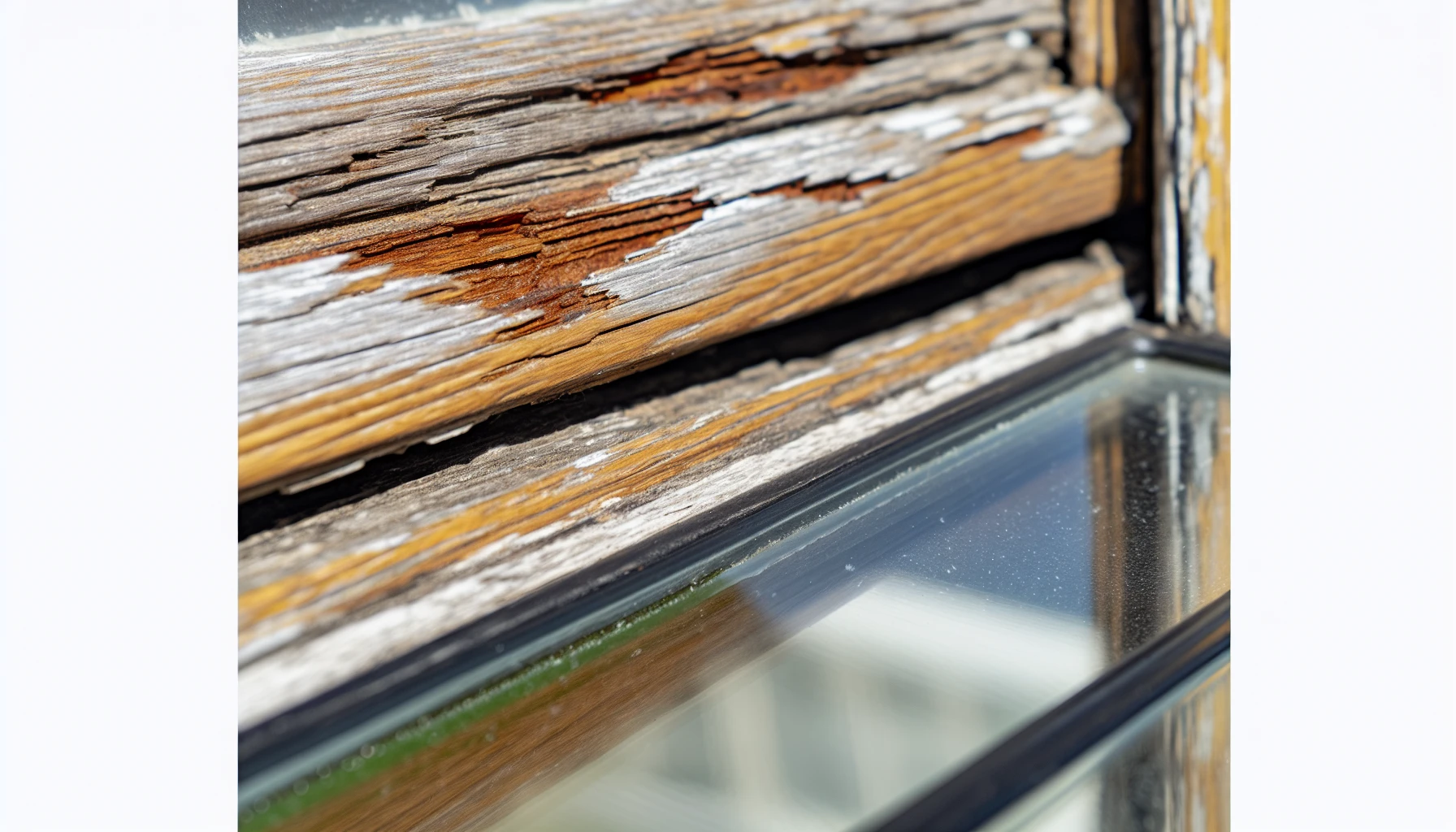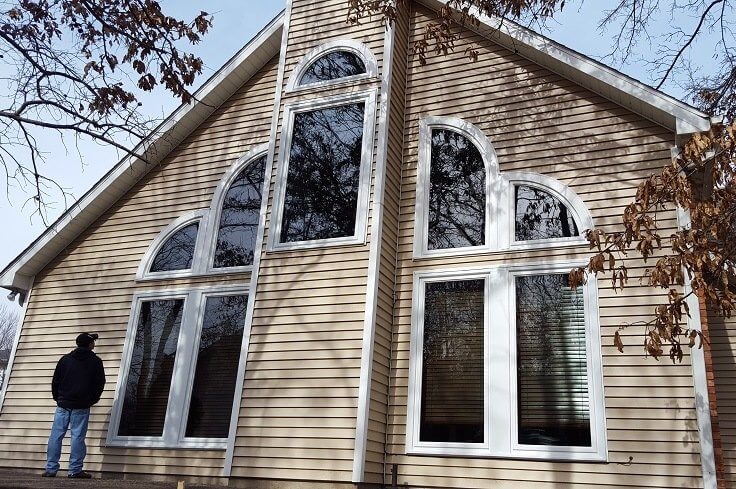Top Tips to Save Money on Your Replace Window Project in 2024
Are you considering replacing your windows to save energy and money? Window replacement can be a game-changer for your home’s comfort, aesthetics, and energy efficiency. This comprehensive guide will help you navigate the world of replace window, from understanding your options to maximizing energy efficiency and saving costs. Let’s embark on this journey together!
Key Takeaways
- Understand window replacement options and evaluate condition of windows for signs of damage or wear.
- Consider material, style, size & type when selecting windows to maximize energy efficiency and minimize costs.
- Shop around for quotes & take advantage of discounts/rebates to save money on your project.
Understanding Window Replacement Options

A variety of window frames and replacement options
Window replacement encompasses two primary options: full-frame window replacement and insert/pocket window replacement. Each method has its own advantages and drawbacks, depending on your home’s requirements and budget. The choice between these two options will significantly impact your window replacement cost, energy efficiency, and overall satisfaction with the project.
Full-Frame Window Replacement
Full-frame window replacement, also known as full frame replacement, involves removing the entire window and window frame, providing better insulation and durability but at a higher cost and longer installation time. This method is recommended for new construction projects, existing buildings undergoing major renovations, or when there is significant damage to the walls and windows. Full frame replacement windows can be more expensive than insert/pocket window replacement due to the increased materials and labor required.
However, the superior insulation it offers by enabling a more secure seal decreases air leakage and boosts energy efficiency.
Insert/Pocket Window Replacement
On the other hand, to replace a window using the insert/pocket window replacement method is a more affordable and simpler option that replaces only the window sashes and hardware, keeping the existing frame intact. This option is ideal for homeowners who want to maintain the original appearance of their windows while upgrading to more energy-efficient replacement window models.
The main advantage of insert/pocket window replacement is its lower cost and easier installation process. However, it may not provide the same level of insulation and durability as full-frame window replacement.
Evaluating Your Windows’ Condition

Damaged window frame with visible cracks
Assessing your windows’ condition is essential in determining the need for replacement. Signs of damage, wear, and age can affect energy efficiency and overall performance. Evaluating your windows can help you decide whether to opt for full-frame or insert/pocket window replacement, and which materials and styles are most suitable for your needs.
Signs of Damage and Wear
Keep an eye out for the following indicators that your windows may need replacement:
- Visible damage, such as cracked or broken glass panes, decay, or mold on the window sill or frame
- Drafts or air leaks around the window
- Condensation between the window panes
- Difficulty in opening or closing the window
If you notice any of these signs, it may be time to consider replacing your windows.
Signs that you need a window upgrade may include drafts or air leaks, excessive condensation, or difficulty in opening or closing windows.
Window Age and Efficiency
The lower energy efficiency of older windows may result in higher energy bills and less comfort in your home. Windows that are 15-20 years old or older may not provide the same insulation as modern models, causing increased energy consumption for heating and cooling.
When it’s time to replace windows, choosing to upgrade your existing windows with newer, more energy-efficient options can significantly improve your home’s energy efficiency and comfort.
Choosing the Right Window Material and Style

Comparison of different window materials
Selecting the right window material and style can significantly impact the overall cost, appearance, and performance of your replacement windows. Factors such as maintenance, durability, and energy efficiency should be considered when comparing different materials and styles.
We will examine some popular window materials and styles to assist you in making a decision.
Comparing Window Materials
Common window materials include:
- Vinyl: energy-efficient, durable, and low-maintenance, but may warp or melt in hot climates
- Wood: renowned for durability and insulation properties, but require regular maintenance
- Aluminum: long-lasting, but may not offer the same level of insulation as other materials
- Fiberglass: strong, durable, and energy-efficient
Each material has its unique characteristics, advantages, and disadvantages.
While fiberglass windows are pricier than vinyl, they offer exceptional insulation and durability. Weighing the pros and cons of each material can help you determine the best option for your home.
Popular Window Styles
Some popular window styles include:
- Double hung window: versatile and easy to clean, with both upper and lower sashes operable for improved ventilation
- Casement windows: offer excellent airflow and a distinctive architectural appearance
- Sliding windows: easy to operate and provide a wide view
- Bay windows: create a dramatic focal point and allow for ample natural light
Each existing window style has its own unique features and benefits, often designed to complement existing window frames.
Sliding windows have a modern look and save space, while bay windows create an elegant focal point and allow for ample natural light. Considering the features and benefits of each style can help you select the perfect windows for your home.
Factors Affecting Window Replacement Costs

Professional installing replacement windows
Window replacement costs are influenced by factors such as the size and type of windows, as well as labor and installation costs. Understanding these factors can help you budget for your window replacement project and ensure you get the best value for your investment.
Size and Type of Windows
Larger and more complex window types typically come with higher costs, while simpler and smaller windows may be more affordable. For example, double-hung windows can range from $400 to $1,000, while casement windows may cost between $597 and $1,273. Sliding windows can range from $415 to $1,270, depending on the construction material and style.
Keeping these factors in mind can help you choose the right windows for your budget.
Labor and Installation Costs
Labor and installation costs can vary depending on the complexity of the project and the expertise of the professionals involved. The average labor cost for window replacement ranges from $200 to $2,200, depending on the size and complexity of the window installation. Additional costs may include:
- Materials
- Removal and disposal of old windows
- Trim and finishing
- Permit fees
- Upgrades and customization
Remember to consider these costs while planning your budget for the window replacement project.
DIY vs. Professional Window Replacement
Deciding between DIY and professional window replacement can be challenging. While DIY may save money initially, there are potential risks and limitations that you should consider.
Contrarily, hiring a professional guarantees proper installation, workmanship warranties, and a broader selection of window options.
Benefits of Hiring a Professional
Hiring a professional, such as CoMo Premium Exteriors, ensures proper installation, workmanship warranties, and access to a wider range of window options. Professionals guarantee that the task is carried out effectively, providing a high-standard of installation, and can save you time and hassle by avoiding costly missteps.
Many professional window replacement companies also offer warranties and guarantees on their work for your peace of mind.
Risks and Limitations of DIY Window Replacement
DIY window replacement can save money but may result in unforeseen damages or complications, especially for larger or more complex projects. These risks include improper installation, voided warranties, and potential damages to your home when you install replacement windows yourself.
Moreover, DIY window replacement might not offer the same insulation and durability as a professional installation, which could affect your home’s energy efficiency and comfort. Weighing the pros and cons of DIY versus professional window replacement can help you make an informed decision.
Maximizing Energy Efficiency with Window Replacement

Energy-efficient window with low-e coating
One of the main objectives of window replacement is to improve energy efficiency. By considering energy-efficient features and additional upgrades, you can significantly enhance the performance of your new windows and reap the benefits of lower energy bills and increased comfort.
Energy-Efficient Window Features
Look for the following features in windows to maximize energy savings and comfort:
- Energy Star certification: These windows have been certified by the U.S. Environmental Protection Agency (EPA) for their energy efficiency.
- Low-e coatings: These coatings help to reduce heat transfer through the window, keeping your home cooler in the summer and warmer in the winter.
- Multiple panes: Windows with multiple panes provide better insulation and reduce heat loss.
By choosing windows with these features, you can improve energy efficiency and maximize energy savings in your home.
Low-e coatings and multiple panes can further enhance the insulating properties of your windows, including glass block windows, reducing heat loss and heat gain.
Additional Upgrades and Treatments
Consider additional upgrades such as weatherstripping, insulation, and window treatments to further enhance energy efficiency. Weather-stripping can effectively seal any gaps or air leaks around windows, preventing drafts and air infiltration. Insulating materials, such as fiberglass or Rockwool, can be used around window frames to increase insulation.
Window treatments like cellular shades, draperies, shutters, and solar shades can also help to improve energy efficiency.
How to Save Money on Your Window Replacement Project
Saving money on your window replacement project is possible by shopping around for quotes and taking advantage of discounts and rebates.
This section will cover methods to reduce your window replacement project’s overall cost without compromising quality or performance.
Shopping Around for Quotes
Obtain multiple quotes from different window replacement providers to compare prices and services. This can help you find the best deal and ensure you get the most value for your investment. Be prepared to provide information about the quantity, style, and material of the windows, as well as labor requirements and any additional features or upgrades.
Comparing quotes can assist in making an informed choice and reducing the cost of your window replacement project.
Taking Advantage of Discounts and Rebates
Look for discounts, rebates, and special offers from manufacturers, utility companies, and installers to reduce the overall cost of your window replacement project. Window manufacturers often provide time-sensitive discounts and rebates, as well as energy efficiency incentives.
Utility companies and government programs may also provide rebates or incentives for energy-efficient window replacements. Taking advantage of these offers can help you save money and ensure you get the best value for your investment.
Summary
In conclusion, window replacement is an essential investment for improving your home’s energy efficiency, comfort, and appearance. By understanding your options, evaluating your windows’ condition, choosing the right materials and styles, and considering factors that affect costs, you can make an informed decision about your window replacement project. Whether you decide to go with DIY or professional installation, always remember to shop around for quotes and take advantage of discounts and rebates. With the right approach, your window replacement project can be both affordable and beneficial for your home.
Frequently Asked Questions
How much should I expect to pay for a new window?
Replacement windows typically cost around $700 per window, including materials and labor, with the price potentially rising to $1,200 for a complicated installation. With this investment, you can benefit from a refreshed look or improved energy efficiency.
Can you replace window yourself?
Yes, with the proper guidance and knowledge, you can replace your own windows. However, you should evaluate the difficulty of the job and prepare yourself for the challenge ahead.
What is involved in replacing a window?
Replacing a window involves cleaning the window opening, applying flashing tape, making sure the sill is level, dry-fitting the new window, applying caulk, placing and securing the window, checking the sashes, and ensuring the window is even.
How much does a full-frame replacement cost?
Replacing a full-frame window can range from $360 to $1,440, making it more expensive than retrofitting. Cost depends on the material, size, and location of the window. For maximum savings, opt for retrofit installation.
What are the primary options for window replacement?
The primary options for window replacement are full-frame and insert/pocket window replacements.
About The Author
Elias Abadi
Owner
Elias, the founder of CoMo Premium Exteriors, has steered the company to become a leading exterior renovation firm in Mid-Missouri, emphasizing quality and customer-centric values. A Columbia resident since age 10, he is an ardent Mizzou athletics supporter. Outside of work, Elias enjoys family time, attending his three sons’ sports activities, and engaging in outdoor pursuits like hiking, fishing, gardening, and hunting.









